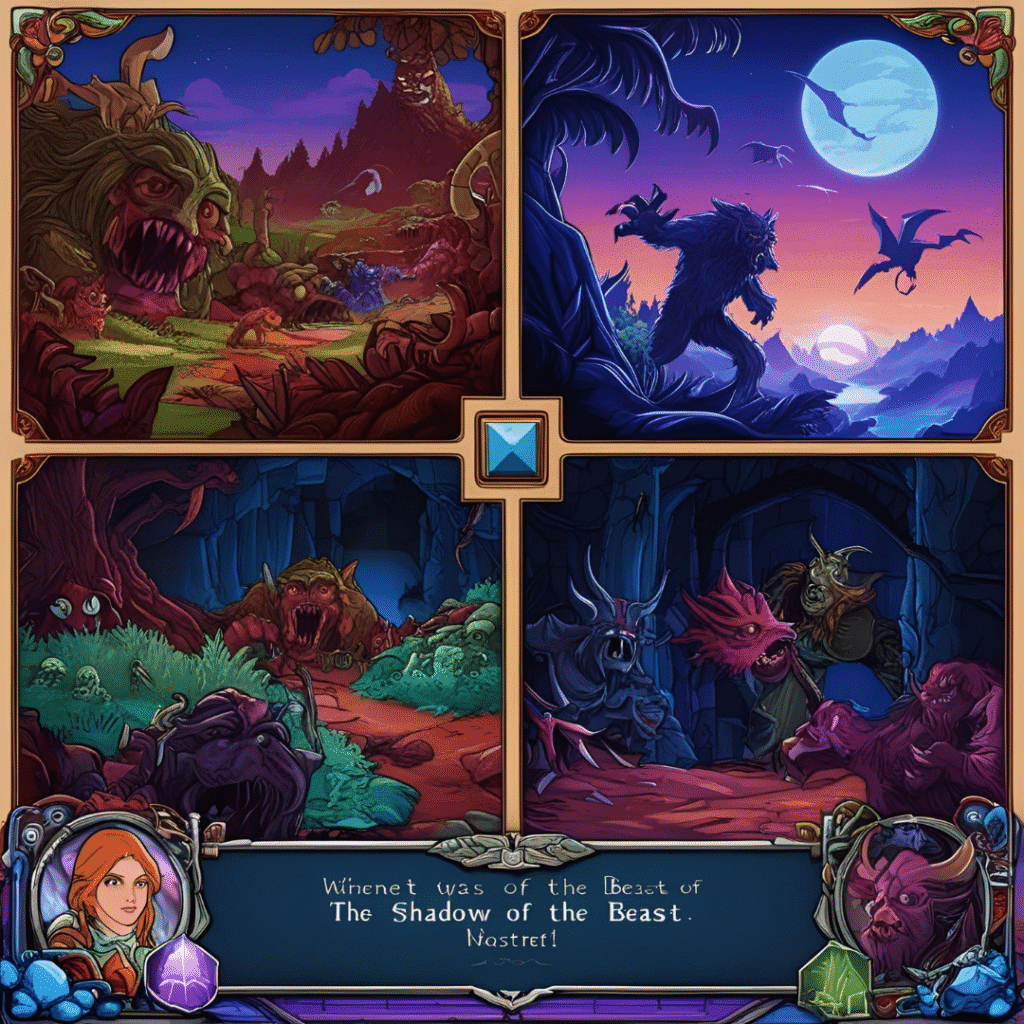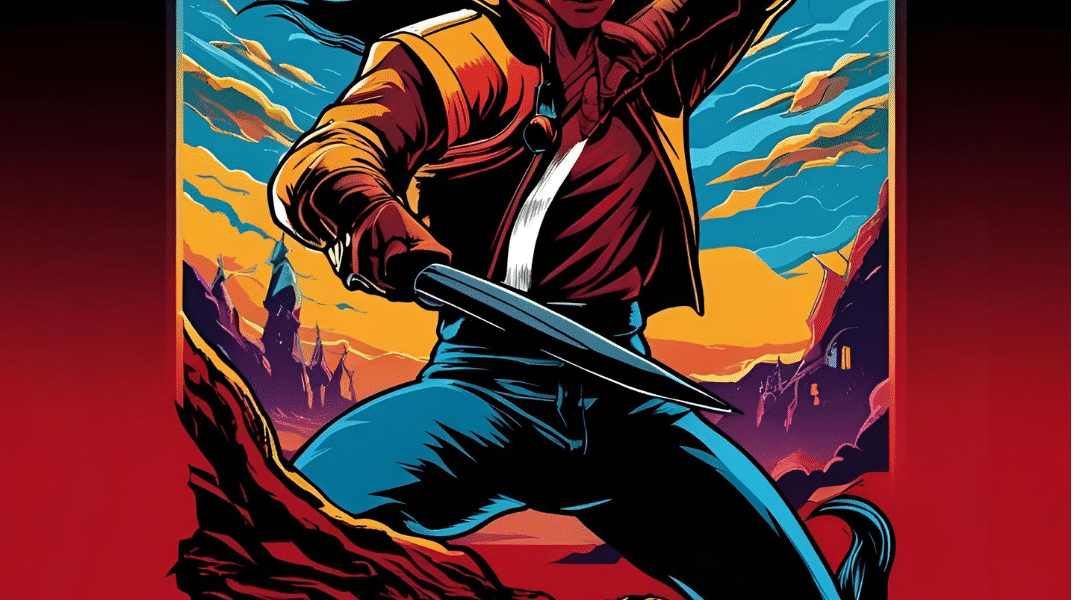Shadow of the Beast (1989) – The Amiga Classic That Redefined Visual Power

In the late 1980s, the gaming world was filled with pixelated sprites and chiptune music. But in 1989, a title came along that looked like it had leapt ten years into the future. That game was Shadow of the Beast, developed by Reflections Interactive and published by Psygnosis for the Commodore Amiga.
It wasn’t just a game—it was a statement. A visual and audio showcase that made gamers stop and say, “How is this even possible on home computers?” With its haunting atmosphere, groundbreaking parallax scrolling, and stunning soundtrack, Shadow of the Beast became an instant legend.
🎮 What’s the Story Behind the Beast?
The plot of Shadow of the Beast was unusual and dark for its time. You play as Aarbron, a human kidnapped as a child and transformed into a monstrous warrior by a demonic overlord named Maletoth. As the game begins, a part of Aarbron’s humanity awakens after witnessing the execution of a man who turns out to be his father.
That revelation sparks your journey—one filled with vengeance, sorrow, and a quest to regain your stolen identity. It’s not told through dialogue or cutscenes but through mood, music, and the strange world itself. It was subtle storytelling done through design—a rarity in 1989.
🕹️ Gameplay: Beautiful, Brutal, and Unforgiving
If you ever played Shadow of the Beast back in the day, you probably remember two things: it looked incredible—and it was really, really hard.
It’s a side-scrolling action-adventure with light platforming and exploration. You run, jump, duck, and fight off monsters using a short-range punch attack. While that sounds simple, it’s the enemy placement, timing, and trap design that make it punishing.
There are moments where a single misstep or missed enemy can cost you dearly. The game has no mercy, and many players found themselves restarting again and again. But for those who mastered it, that challenge made victory all the sweeter.
🎨 Visuals: A New Standard for Home Gaming
The graphics of Shadow of the Beast were its most talked-about feature—and for good reason. On the Amiga, it featured 13 layers of parallax scrolling. That means the background moved at different speeds to create a 3D illusion in a 2D game. At the time, this was mind-blowing.
Add to that incredibly detailed enemy designs, smooth animations, and a dreamlike color palette, and you had a game that looked like nothing else on the market.
Even people who didn’t own an Amiga knew about Shadow of the Beast. It was the game shown in magazines, demoed in stores, and brought up in playground debates about which computer was better.
🎵 Music: The Haunting Sound of a New Era
The soundtrack of Shadow of the Beast, composed by David Whittaker, is still praised today. It’s moody, mysterious, and atmospheric. The music didn’t just accompany the game—it became a part of the world.
The title screen theme, in particular, has been etched into the memory of Amiga fans for decades. It set a tone of sadness and mystique before you even picked up the controller.
For a home computer game in 1989, this level of audio design was unheard of.
💾 Technical Masterpiece
Let’s talk tech for a second. Shadow of the Beast was developed to push the Amiga to its limits. It ran in ECS (Enhanced Chip Set) mode, used multi-layer scrolling, and had an unusually high frame rate for its time.
The developers even designed their own custom tools and hardware tricks to get everything working together smoothly. The game required 1MB of RAM, which was a lot in 1989. That also meant many Amiga users had to upgrade their system just to play it.
This wasn’t just a game—it was a technical flex that said, “Look what the Amiga can do.”
💾 Ports and Versions
Due to its success, Shadow of the Beast was ported to many systems:
- Sega Genesis / Mega Drive
- TurboGrafx-CD
- Atari Lynx
- Amstrad CPC
- ZX Spectrum
- Commodore 64
- Atari ST
However, most of these versions had downgraded graphics and audio due to hardware limitations. The Amiga version remained the gold standard, the one everyone compared the others to.
🧟 Legacy: More Than Just a Pretty Game
Shadow of the Beast was more than a technical marvel—it became part of gaming history.
It had two sequels:
- Shadow of the Beast II (1990)
- Shadow of the Beast III (1992)
Both games tried to expand on the world and the story, with better controls and new mechanics, but neither quite captured the magic of the original.
In 2016, a full remake of Shadow of the Beast was released on PlayStation 4, modernizing the game while paying tribute to the original. It even included the original Amiga version as an unlockable bonus!
🧠 Why It Still Matters
So why does a hard, slightly clunky game from 1989 still get talked about?
Because Shadow of the Beast was a moment—a glimpse of the future in an era of 8-bit games. It was one of the first titles that made people feel like games could be more than entertainment. They could be art. They could be emotional. They could be mysterious, dark, and unforgettable.
Even with its brutal difficulty and occasionally frustrating mechanics, it inspired developers, musicians, and gamers alike. It taught us that presentation matters. That games could tell stories with visuals and sound, not just words.
🎤 Final Thoughts
Shadow of the Beast wasn’t perfect—but it didn’t have to be. What it achieved visually, musically, and atmospherically was light-years ahead of its time. It showed what home computers were capable of when developers thought beyond the limits.
If you’re a fan of retro games or game history, Shadow of the Beast is essential. Not just because of how it played—but because of how it changed the way games looked and felt forever.




